The goal of inclusion is to teach kids to value each other regardless of race, academic ability, physical ability, appearance, gender, etc. The best way to do that is for everyone to be able to share their story.
Promoting positive reputations for people with disabilities
Nurturing relationships with others
Encouraging choices by offering options and opportunities to explore new things
Building competencies that will lead to the highest level of achievement
- Meeting Street Values
- Joe Petner, Principal, Beaver Meadow Elem.
My project started with the questions:
1. How can I give each of these children a voice to tell their story?
2. How can empowering them improve the experience of inclusive education for everyone involved?
These are some of the people who are involved:
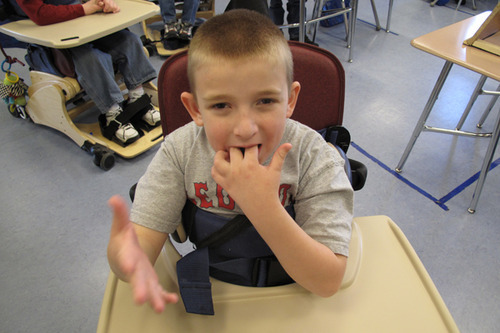
Daniel is in second grade. He doesn't speak, but uses some sign language words and answers yes and no questions. He is extremely friendly and motivated by being with his friends. Sometimes his disruptive behavior can get in the way of class.
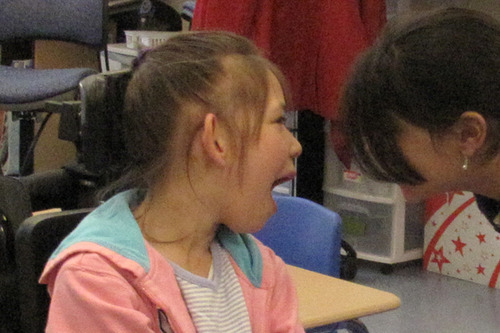
Elizabeth is in third grade. She is very intelligent and thoughtful, but her speech is difficult to understand. Often people mistakenly assume she doesn't understand them, because they find it difficult to understand her.
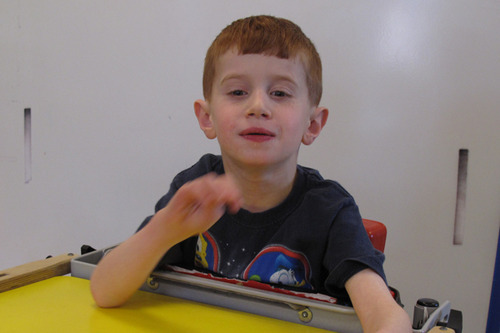
James is in second grade. He doesn't speak at all and it can be difficult to tell how much he understands. Often he resorts to aggressive means to get attention and express himself, such as screaming or hitting. It is important for him to be with his classmates because he is much happier and more energized when he is with friends.
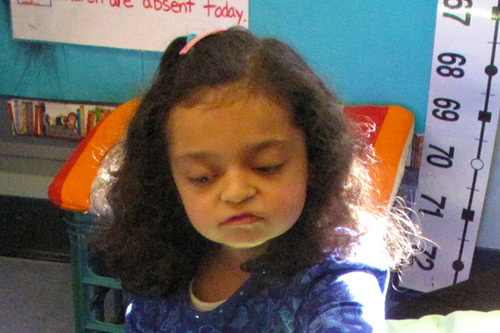
Katie is in first grade. She uses some words to communicate, although often it can be hard to tell what she's saying unless you know her well. Inclusion is great for her because she is really friendly and loves to play with her friends, but sometimes tries too hard and grabs or pulls them.
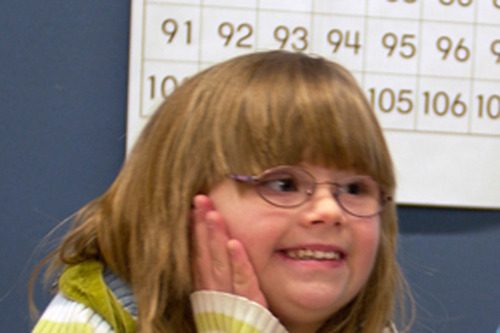
Marrissa is in third grade. She is a social butterfly and her classmates love her. She needs to be included because she will push herself extra hard to keep up with her classmates, but doesn't try very hard when she isn't challenged.
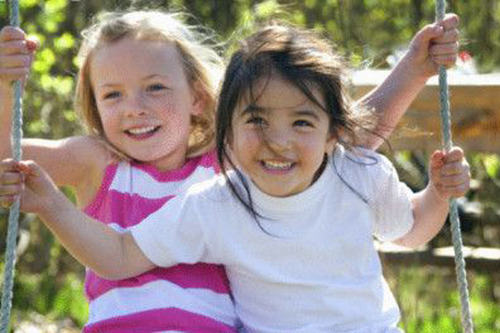
Sarah is in kindergarten. Her parents were worried she would grow up confused because she was adopted, so they wanted to raise her without binaries like race and ability. They were worried inclusion wouldn't be academically rigorous enough, but it turns out Sarah's class is performing at the top of the state in reading.

I spent a few days a week at Meeting Street School observing the inclusive classrooms.
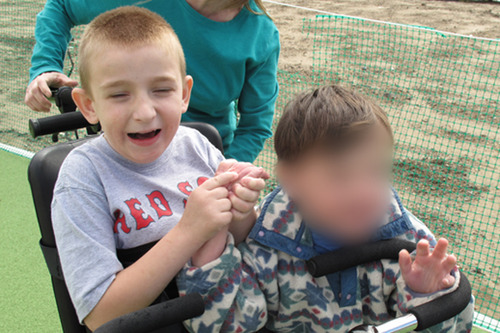
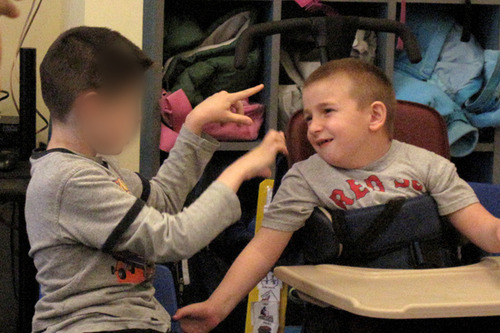
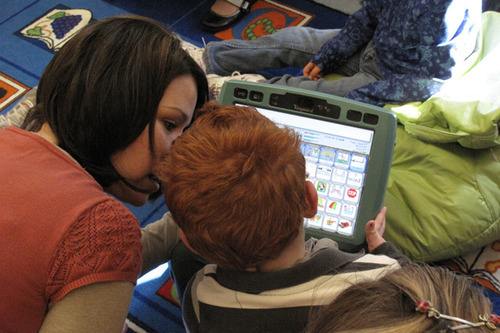
I met with a graduate student in Performance Studies at Brown, who introduced me to Subaltern studies. She brought up concerns about giving voice to people and whether it would be empowering and authentic.
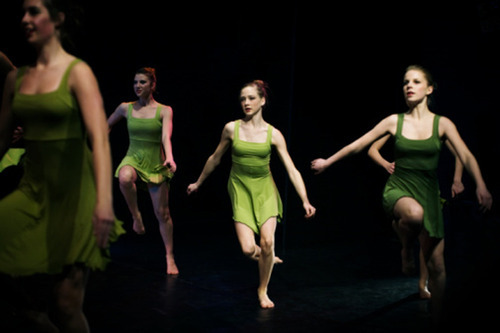
After our conversations I decided to include a non-linguistic means of communication and looked to characters from media who communicate effectively without language.
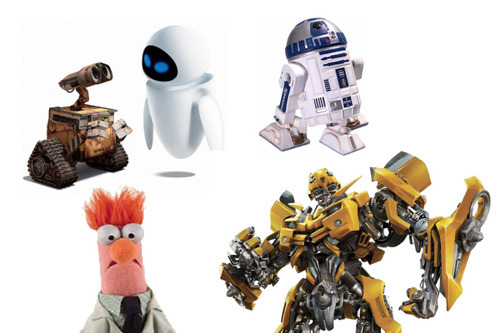
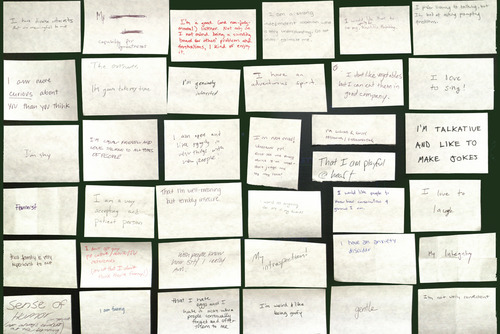
In order to consider what messages it might be important to share, I asked my classmates about their communication. These cards are their answers to the question: "What is one thing about your personality you wish other people knew, but it isn't immediately obvious?"
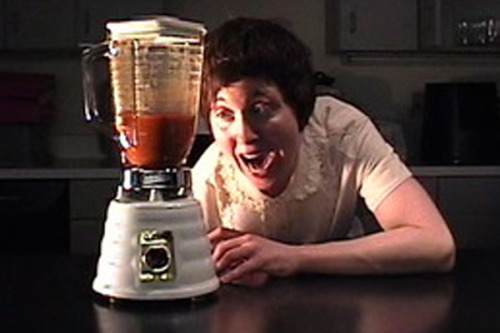
Blendie, By Kelly Dobson, MIT Media Lab. Blendie is an exploration of ways people can interact with machines using behavior instead of buttons. The blender is turned on by growling at it to match the sound you want it to make.
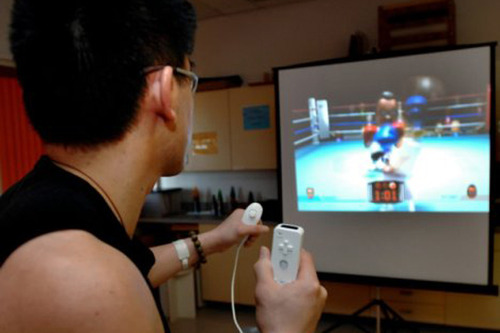
Nintendo Wii is a way of interacting with technology using gestures and behaviors, not keys and buttons.
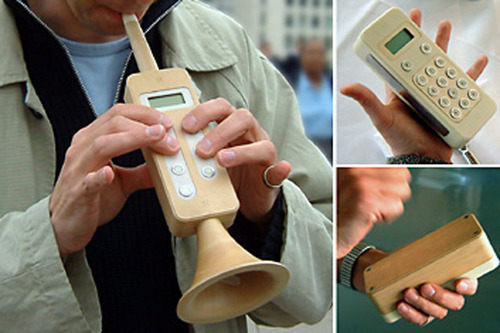
Social Mobiles, Ideo. These mobile phones explore ways of communication that go beyond speaking into the phone. The designers were interested in changing the way people behave with their phones in public spaces.
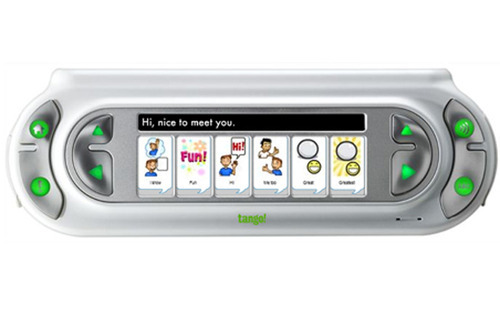
The Tango by Richard Ellison and BlinkTwice is the first communication device that uses tone of voice to give users control over how they sound to others.

Kiss Communicator, IDEO. Kiss Communicator is for couples who are at a distance. It is activated when one partner blows into it and a pattern appears on the other's device that is only visible for a moment, like a kiss.
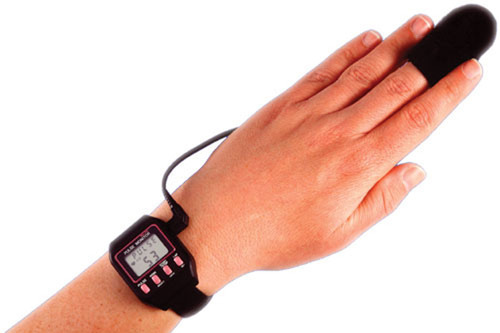
Biosensors recognize patterns in the body such as heart rate and blood pressure and they can be used to provide clues to emotional conditions.

Somiya Says was designed by Joanna VanDaalen and Somiya Shabban to empower Somiya to share her personality, because people often assume she isn't intelligent because her speech is unclear. Graham Pullin writes "The short term utterance is also a long term badge— a label of Somiya's own devising, to express her individuality and identity, rather than any stereotype associated with her impairment"
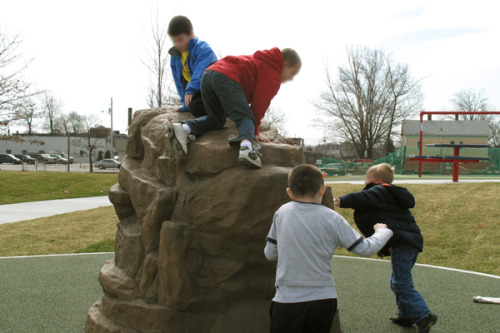
Language is social. The inclusive communication device for the classroom will emphasize communicating personality and emotion, as a priority over needs based and academic communication.
All behavior is communication. The inclusive communication device will make use of and bring attention to the existing communication abilities of each child.
The system will utilize and reinforce the child’s existing means of communication.
The system will use emotional communication that is not linguistic to increase the range of expression and add authenticity.
The system will empower the child to express their personality and social identity.

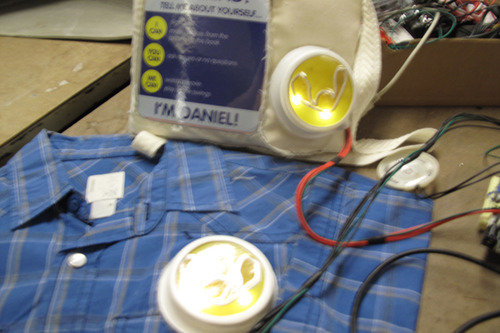
These prototypes were built with Arduino to experiment with how the device would be received in a classroom setting. I based the sound effects on characters from WALL-E and Stars Wars.
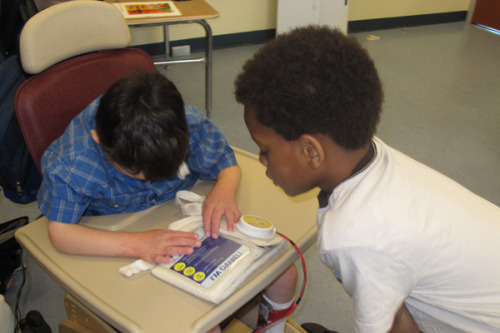
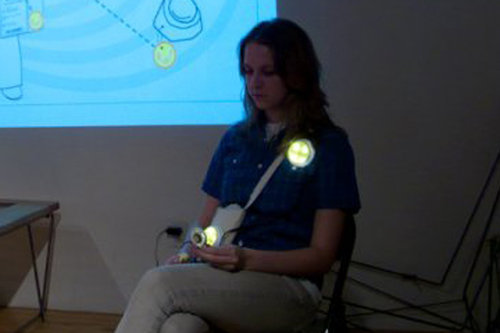
During user testing in this phase, I was interested in how the expressive badge would influence the classroom setting. For the child this device is unlike the "real" experience of the device because it is not gesture activated. This prototype provided the opportunity to observe the child's peers and caregivers' reactions to the child's new voice. You can also see it on a classmate during my final review.
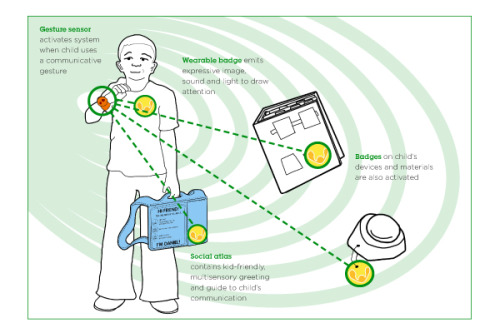
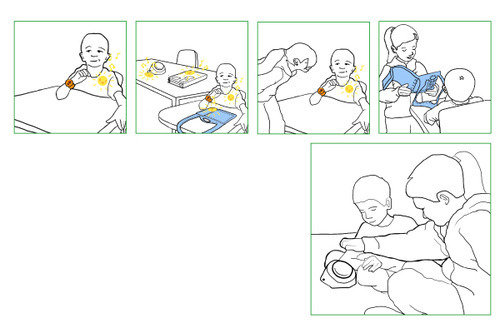
This system allows the child to use their existing gestural communication to express them self to their peers and caregivers. It incorporates gesture sensing, an immediate expressive utterance based on the child's personality and the emotion of their gesture to get attention, and an introductory"guide" to the child that explains how best to communicate with them using their available means.
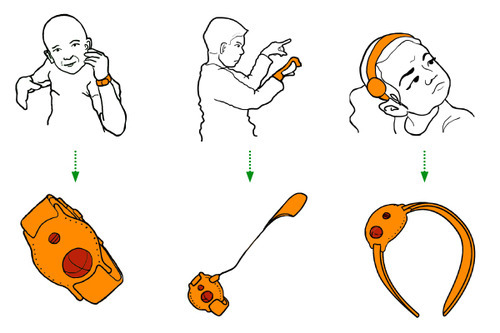
The child communicates using an existing gesture they already use to communicate. When they get the system there is a training period when their caregiver presses a button on the sensor they've chosen every time the child does the gesture, so the system can learn the signature. Later, whenever the child does that action the system will be activated.
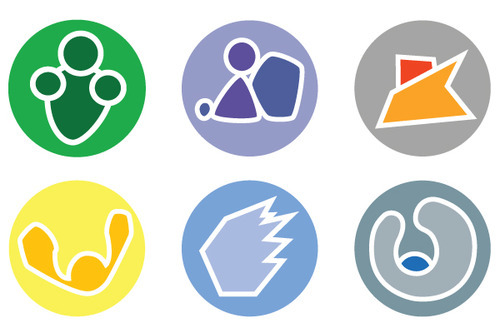
The child and caregiver choose an icon for the child's badge to convey who they are. Each badge represents a personality type, and is capable of a full range of emotional expressions related to that personality. It is important for a child who is normally bubbly and fun to be able to make an angry expression, and vice versa.
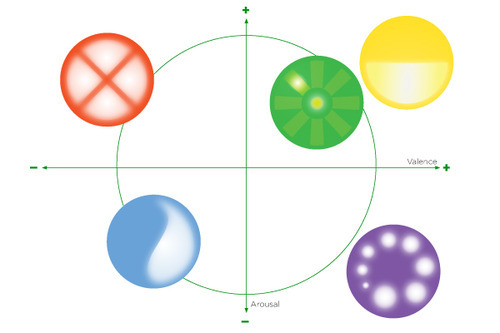
The first set of badges were symbolic of characters, this is an alternate set that are more abstract. They represent emotions and valances but not in case some users who feel uncomfortable representing themselves with a "spokesperson" or avatar.

The social atlas is a social and communication guide to child. It also has a badge on it to draw attention to the full range of communicative abilities the child has. This way if someone meets them they will have an opportunity to communicate with them without frustration. The atlas is plush and portable and low tech so the child can always keep it with them, even if their other devices are unavailable. It has audio buttons for listeners who need audio support and contains extra pockets for additional helpful materials such as symbol boards or sign language guides.
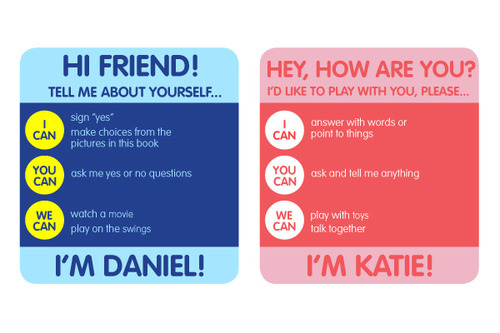
The cards in the social atlas emphasize the ways the user and listener can contribute to a positive interaction.
Click here to download the complete book about my senior project, Inclusive Communication.
